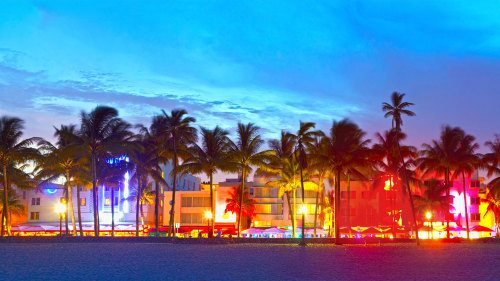A research study revealed that North America will have 14.4 million connected streetlights by 2023
Miami is the world’s number one city in terms of connected streetlights deployment according to a recent study by research firm IoT Analytics.
Converting legacy streetlights into connected LED or connected solid-state lighting has become an important ingredient of digital transformation strategies for many cities, the research firm said.
As part of this research, 111 cities were analyzed based on their deployment of connected streetlights across North America (36 cities), Europe (35 cities), APAC (33 cities) and Rest of the World (7 cities). IoT Analytics said the ranking is based on the level of deployment of connected streetlights as of the end of last year.
Here are the top 5 cities in terms of connected streetlights deployments:
1.Miami. The conversion of legacy streetlights into smart LED streetlights is one of the strategies enabling Miami authorities to reduce energy consumption, which in turn, reduces carbon dioxide emissions within their jurisdiction. The rollout in Miami was performed by the technology firm Itron and the utility company Florida Power & Light. The nearly 500,000 units of connected streetlights utilize the IEEE 802.15.4g wireless RF mesh architecture.
2. Paris. Paris had 280,000 connected streetlights at the end of last year. Itron retrofitted IPv6-based LED streetlights across the city. The connected streetlights utilize IEEE 802.15.4g wireless RF mesh architecture supported by the Wi-SUN Alliance.
3. Madrid. Signify (formerly Philips Lighting) retrofitted 225,000 connected streetlights comprising of 84,000 locally manufactured Philips LED lamps and luminaires and 141,000 non-LED lighting solutions provided by Philips. The connected streetlights are remotely controlled and monitored in a command center, including remotely controlling light intensity when and where it is needed. The city benefits from annual energy savings of 44% on previous costs for legacy streetlights, IoT Analytics said.
4. Los Angeles. Connected streetlights in LA are being positioned to provide the backbone support to host other IoT applications. The Californian city ended last year with 165,000 connected streetlights. The city governing body in Los Angeles collaborated with Signify to deploy 110,000 units of licensed wireless technology based connected streetlights. Each connected streetlight is installed with a Vodafone M2M SIM card and utilizes Vodafone’s M2M wireless network to connect individual smart light poles to the Interact IoT platform via licensed wireless technologies.
The streetlights in LA also act a smart city hub. For example, noise-sensing microphone modules were mounted on connected streetlights to monitor environment noise including gunshot sounds on a pilot test. Additionally, EV Charging points were mounted on connected poles. Furthermore, Signify, Ericsson and the city governing body collaborated and deployed 100 units of Smart Poles utilizing 4G LTE.
5. Jakarta. Indonesia’s capital city has already deployed 140,000 smart streetlights. Signify deployed licensed wireless technology enabled connected LED streetlights in 2016. This enables city authorities to remotely monitor streetlight infrastructure, identify faulty lights and remotely control the lights. Each connected streetlight is equipped with a Vodafone M2M SIM card and utilizes Vodafone’s M2M wireless network to connect individual smart light poles to the Interact IoT platform via licensed wireless technologies.
North American market
IoT Analytics estimates that installations of connected streetlights in North America will reach 14.4 million by 2023. Shipment of connected streetlight hardware devices (e.g. LED lighting fixtures, controllers, communication nodes, gateways, and IoT edge routers) is expected to grow with a CAGR of 22% and surpass 9 million units in 2023. The penetration rate in North America is expected to increase by 21 percentage points from 7% in 2018 to 28% by 2023. The growth is driven by U.S. government initiatives to deploy 18 million connected streetlights by 2025 in the U.S.

